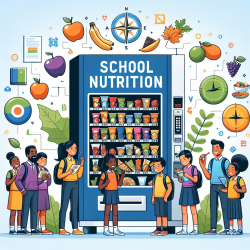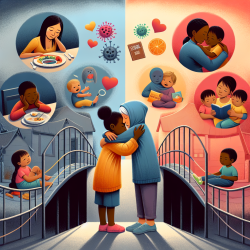Understanding Childhood Trauma: Insights from the Bergen Child Study
Childhood trauma can have profound effects on development, and understanding these impacts is crucial for practitioners working with children. The recent study titled "Exposure to potentially traumatic events and PTSD symptomatology in Norwegian 11–13-year-olds: results from the Bergen Child Study" offers valuable insights into the prevalence and effects of trauma in children. This blog aims to highlight key findings from the study and provide actionable insights for practitioners.
Key Findings from the Bergen Child Study
The study surveyed Norwegian children aged 11-13 and found that 4.8% had experienced potentially traumatic events (PTEs). Among these children, 30.9% exhibited post-traumatic stress symptoms (PTSS). Interestingly, none of the children met the full criteria for PTSD, highlighting the importance of recognizing subthreshold symptoms.
The study identified four main clusters of PTSS:
- Arousal Reactivity: The most common cluster, affecting 90% of children with PTSS.
- Negative Cognitions and Mood: Present in 80% of affected children.
- Intrusions: Experienced by 63.3% of children.
- Avoidance: Reported by 60% of children.
Implications for Practitioners
The study underscores the importance of a comprehensive approach when working with children exposed to trauma. Here are some actionable insights:
- Focus on Arousal Reactivity: Given its prevalence, practitioners should prioritize interventions targeting arousal reactivity symptoms, such as poor concentration and irritability.
- Family Environment Matters: Children with PTSS were found to live in families with higher stress levels. Practitioners should consider family dynamics and stressors when designing interventions.
- Early Intervention is Key: While none of the children met full PTSD criteria, early intervention for subthreshold symptoms can prevent progression to more severe conditions.
- Utilize Multi-Informant Reports: Relying solely on parental reports may not capture the full extent of a child's experiences. Including self-reports from children can provide a more comprehensive view.
Encouraging Further Research
While the Bergen Child Study provides valuable insights, there is a need for further research to explore the nuances of childhood trauma. Future studies should focus on:
- Exploring the relationship between the number of PTEs and the severity of PTSS.
- Investigating the role of specific family stressors in the development of PTSS.
- Examining the effectiveness of various intervention strategies tailored to different symptom clusters.
For practitioners, staying informed about the latest research and continuously updating their knowledge base is essential. This study serves as a reminder of the complex interplay between trauma, family dynamics, and child development.
To read the original research paper, please follow this link: Exposure to potentially traumatic events and PTSD symptomatology in Norwegian 11–13-year-olds: results from the Bergen Child Study.










